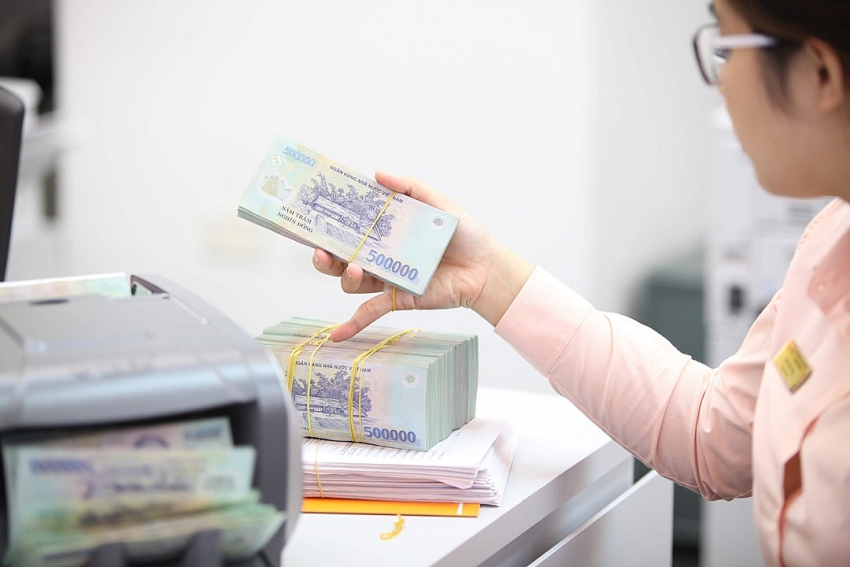Slight rate moves projected for year
 |
| Slight rate moves projected for year, illustration photo |
Deposit rates at all terms also dropped to a historical low while lending rates fell at a slower pace. Banking liquidity remained abundant throughout 2020 as credit demand was stagnant due to the pandemic.
That also led to diverted investments from bank deposits to other investment channels such as stocks and real estate.
Entering 2021, interest rates maintained low levels before Lunar New Year and then went slightly higher than the 2020 lows, reflecting stronger inflation expectations.
Vietnam’s February inflation marked the sharpest increase in prices on a monthly basis since September 2012 and short-term deposit rates saw opposite actions right after from banks. Large commercial banks such as Techcombank, VPBank, and ACB have raised their multi-term rates by 0.1-0.2 per cent.
This rate hike has not spread over to the general market yet but signals a warning about the end of the low rates era.
Rising global oil and raw materials prices are contributing to worries about rising inflation ahead, especially under the low base effects. For Vietnam, inflation pressure is existing but not as worrying as in the 2008 or 2011 period, thanks to the SBV’s stable and oriented monetary policies in the last few years.
Together with stable exchange rates and the novel demand shock of the coronavirus pandemic, Vietnam’s consumer price index is expected to increase gradually until the end of the year and still under the target of 4 per cent of the government.
The combination of controlled inflation and firm growth argues for stable SBV policies. Rates, therefore, will not see any significant moves but are still expected to bottom up in the first quarter of 2021.
Besides inflation pressure, deposit rates also react to liquidity conditions and market competitiveness. Deposit rates will face challenges to maintain low values such as limited unsterilised liquidity tools of foreign exchange purchases, the expected rising credit demand, and the prudential measures to reduce short-term funding at banks effective from October.
The increase in deposit rates will not necessarily translate into an increase in lending rates, but put pressure on the possibility of banks to sacrifice their net profit margins to lower lending rates. Thus, we expect lending rates to move sideways through the year.
In the investment perspective, the global rates hike will signal outflows in the stock market from foreign investors like in the 2018-2019 period.
The biggest risk in the market now is the rising bond yield that could put pressure on the Fed’s decisions. Reflation trade in the US has created bond market sell-offs from the beginning of the year.
US Treasury bond yields have risen rapidly to over 1.7 per cent from the previous low of 0.5 per cent in 2020. Rising US bond yields are theoretically bad for emerging markets, and exchange traded funds tracking shows an outflow of $68 million from Vietnam from the beginning of the year.
Further rising yields in US bond market will prompt investors to move investments to the bond markets.
On the other hand, domestic rate hikes will render bank deposits more profitable and therefore put pressure on the stock market’s new inflows.
In 2021, we only expect a slight move of deposit rates until the year’s end, thus it is not attractive enough to lure investors from other profitable channels such as stocks and real estate.
What the stars mean:
★ Poor ★ ★ Promising ★★★ Good ★★★★ Very good ★★★★★ Exceptional
Related Contents
Latest News
More News
- Standard Chartered flags global infrastructure financing gap (November 28, 2025 | 18:00)
- Ho Chi Minh City taps Ant International to strengthen fintech and IFC ambitions (November 27, 2025 | 10:00)
- Nam A Bank and GCPF partner on climate adaptation finance (November 24, 2025 | 19:00)
- Thailand’s Café Amazon exits Vietnam after five years (November 22, 2025 | 12:56)
- PVT Logistics debuts on HSX (November 21, 2025 | 14:01)
- JBIC and BIDV join forces to back Vietnam’s green transition (November 19, 2025 | 15:50)
- Vietnam’s financial sector drives $1 billion IPO surge (November 19, 2025 | 15:44)
- Bank stocks gain appeal on strong credit growth and expanding ecosystems (November 18, 2025 | 15:22)
- Banks raise deposit rates as year-end lending heats up (November 17, 2025 | 07:35)
- VNU-UEB conference highlights risk management and fintech strategies (November 16, 2025 | 16:00)

 Tag:
Tag:




















 Mobile Version
Mobile Version